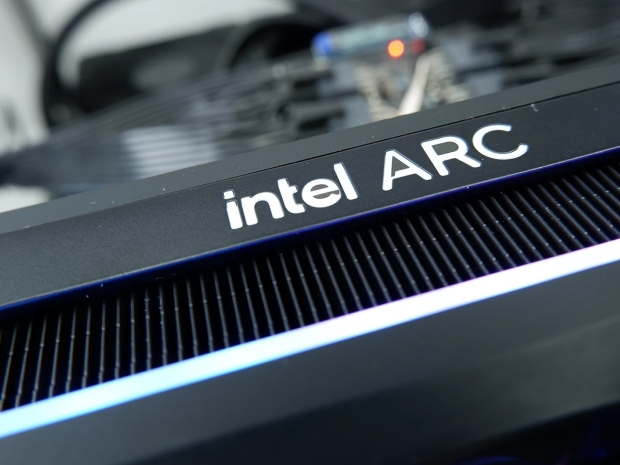For those who came in late, Intel touted Battlemage as a way it would rival the likes of AMD's RX 7900 series and Nvidia's RTX 4080.
However, according to a YouTube channel called RedGamingTech, Intel may aim for something other than the top spot. Instead, it may focus on the mainstream market, where most gamers buy cards.
Battlemage might sound like a beast – it was rumoured to have 56 Xe cores, a whopping 116MB of L2 cache, and a super-fast 256-bit memory bus. Not to mention a mysterious 512MB of 'Adamantine' cache, a fancy name for a particular layer of memory that boosts performance.
But RedGamingTech now says that those specs are wrong. The real Battlemage would have a smaller 192-bit memory bus, only 8MB of L2 cache, and no Adamantine cache.
To make matters worse, Chipzilla may not even bother releasing this chip because it would cost too much. Instead, it may settle for a cheaper and weaker GPU, with 40 Xe cores and 18MB of L2 cache.
Compared to Intel's current GPU, the Arc A770, this “Battlemage” looks like a wink. The A770 has 32 Xe cores, 16MB of L2 cache, and a 256-bit memory bus. So unless Battlemage has some tricks up its sleeve, it won't be much of an upgrade.
Battlemage may have improved its Vector Engines (XVE), the parts of the Xe cores that do the heavy lifting. Hardware Times claims Battlemage's XVEs can handle 16 threads simultaneously, while Alchemist's XVEs can only take eight.
That means that one Battlemage XVE is worth two Alchemist XVEs. But that doesn't mean that the Xe cores are twice as big. Intel may have reduced the number of XVEs per Xe core from 16 to 8, which would save some space and power.
The A770 was a bit big because it was made on an old process node called N6, which is inefficient. Battlemage could be smaller and better if made on a newer node, like N5 or N3.
But that's a big if. Battlemage is still far away, and no one knows what it will look like. It could be a game-changer, or it could be a flop.
One thing is clear, though. Intel will have a tough time competing with AMD and Nvidia, who are not sitting still. AMD is working on its next-gen RDNA 4 chip, which could be a monster. Nvidia is also cooking up something new called Blackwell, which could be even more powerful.




